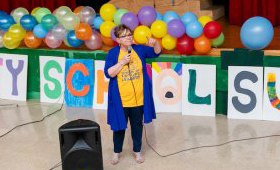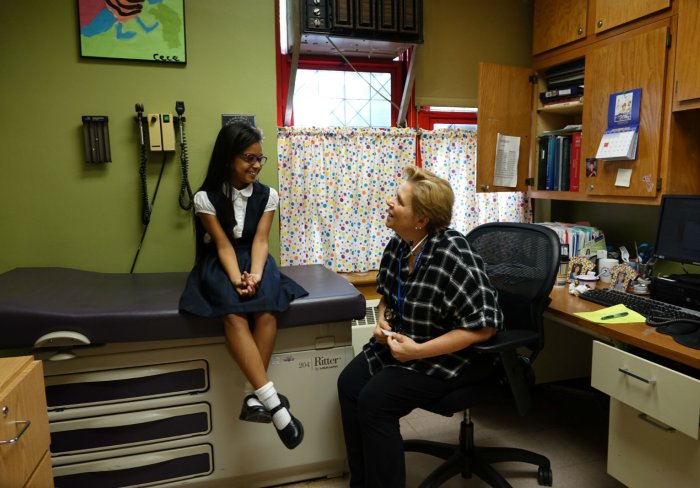The P2 Project (Pregnancy Prevention) at Children’s Aid aims to reduce unintended adolescence pregnancy through peer programming, community engagement, comprehensive sex education, and reproductive health services.
A major component of the sex education offered at our sites includes building empathy and understanding of gender identity, gender expression, and sexual orientation.
Madeleine Pardy, a senior health educator in our P2 Project, teaches comprehensive sex education to middle and high school students. She starts every class by asking students their pronouns and describing the difference between sex and gender.
“I talk about what it means to be intersex,” she said. “When someone is assigned a sex at birth, it’s not necessarily going to be male or female, so already that fallacy of there being two sexes or two genders starts to fall apart.”
Students also discuss what kind of expectations they feel from family, friends, community, and media based on the gender they were assigned at birth. Discussing these gender roles allows the class to break them down and understand that they are socially constructed.
“Once we have an understanding of how gender is constructed, we talk about gender identity more specifically and what it means to be non-binary, trans, cisgender,” she said. “We can’t look at someone and make assumptions about their pronouns or their identity based on physical attributes.”
Madeleine is also intentional about the language she uses to describe a variety of scenarios. When she conducts workshops on healthy relationships, the people in those relationships use different pronouns. She also uses gender neutral language when describing body parts or discussing birth control.
Creating an inclusive classroom ensures that the education she’s providing is relevant to the needs of her students.
“If I were to focus only on the students who were straight and cis-gender, I would be leaving out huge populations and groups, and it wouldn’t be relevant to everyone I’m working with,” she said.
Many of the students come to Madeleine’s class with a baseline of knowledge on these topics and with a curiosity that makes her job enjoyable, she said.
“I love this generation because they are so much more informed than I ever was at that age,” she said. “We can say what we want about access to the internet, but I do think it has really improved the way young people understand identity.”
Speaking about sex and gender identity at a young age can be considered taboo by adults, but children as young as 3 are able to identify their gender, Madeleine said. She argues that discussing these topics at a young age promotes safety.
States across the country are proposing and passing legislation to discriminate against transgender youth. Black trans women are for more likely than other groups to experience homelessness, unemployment, and fatal violence.
Education can play an important role in combatting the ignorance that leads to violence and discrimination.
“When we have conversations about gender identity at a young age and we build empathy and understanding, I think it helps to keep people safe,” she said. “I think the assumption that, ‘They’re too young to understand’ is unfair to that young person. All we can do as adults and educators is give them the tools and the language and the resources to further develop an understanding.”







